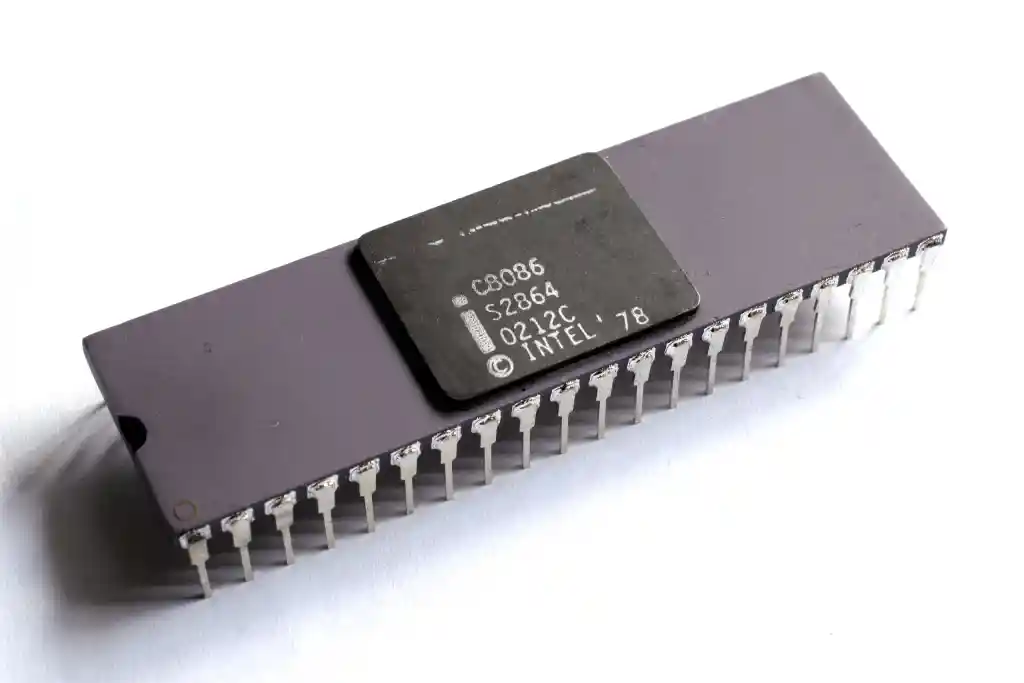The Intel 8086, a groundbreaking microprocessor introduced in 1978, marked a significant advancement in computer technology. This chip laid the foundation for the x86 architecture that still dominates personal computing today. For enthusiasts and collectors, the 8086 represents not just a piece of technology, but a tangible connection to the early days of modern computing.
Historical Significance
Intel’s 8086 was revolutionary for its time, offering a 16-bit architecture, a substantial leap from the 8-bit processors common in the late 1970s. Its design influenced the development of subsequent processors and played a pivotal role in the evolution of personal computers. The 8086 was notably used in the IBM PC, which set the standard for PC compatibles.
The Allure of Collecting
Collectors of the Intel 8086 pursue this hobby for various reasons. Some are nostalgic, looking to own a piece of their computing past. Others are historians, eager to preserve the artifacts that charted the course of digital technology. Then there are technology enthusiasts who admire the engineering and design of this iconic processor.
Varieties and Rarity
The 8086 came in several variants, including the standard 8086, the 8086-1 (a higher clock speed version), and the 8086-2. Additionally, there were industrial versions designed for more demanding environments. Rarity varies significantly; some models were mass-produced, while others, especially pre-production or limited release versions, are highly sought after by collectors.
Intel 8086 CPU Collecting: A Journey Through Computing History
Introduction
The Intel 8086, a groundbreaking microprocessor introduced in 1978, marked a significant advancement in computer technology. This chip laid the foundation for the x86 architecture that still dominates personal computing today. For enthusiasts and collectors, the 8086 represents not just a piece of technology, but a tangible connection to the early days of modern computing.
Historical Significance
Intel’s 8086 was revolutionary for its time, offering a 16-bit architecture, a substantial leap from the 8-bit processors common in the late 1970s. Its design influenced the development of subsequent processors and played a pivotal role in the evolution of personal computers. The 8086 was notably used in the IBM PC, which set the standard for PC compatibles.
The Allure of Collecting
Collectors of the Intel 8086 pursue this hobby for various reasons. Some are nostalgic, looking to own a piece of their computing past. Others are historians, eager to preserve the artifacts that charted the course of digital technology. Then there are technology enthusiasts who admire the engineering and design of this iconic processor.
Varieties and Rarity
The 8086 came in several variants, including the standard 8086, the 8086-1 (a higher clock speed version), and the 8086-2. Additionally, there were industrial versions designed for more demanding environments. Rarity varies significantly; some models were mass-produced, while others, especially pre-production or limited release versions, are highly sought after by collectors.
Collecting Tips
- Research: Understanding the different types of 8086 CPUs and their history is crucial.
- Condition: Look for chips in good condition. Value increases with intact pins and legible markings.
- Authenticity: Be wary of fakes or replicas, particularly with rarer models.
- Networking: Joining forums and groups can provide valuable information and buying opportunities.
- Preservation: Proper storage and handling are key to maintaining the chip’s condition.
The 8086 in Modern Computing
While the 8086 itself is obsolete in practical terms, its legacy lives on. Modern x86 processors owe their lineage to this classic chip, making it a vital piece of computing history. For programmers, understanding the 8086 can provide insights into the underpinnings of modern software and hardware.
Interesting facts worth noting
- Origin as a Stopgap Solution: Interestingly, the 8086 was originally intended as a temporary substitute for Intel’s ambitious and delayed iAPX 432 project, a 32-bit architecture. Intel needed a new chip to compete with the 16-bit processors from other manufacturers and to counter the popularity of Zilog’s Z80 chip. The 8086’s development was a response to these market pressures.
- Instruction Set Design: The 8086 was notable for its software-centric approach to design. Its principal architect, Stephen P. Morse, focused on creating a processor that would run existing 8080 software more efficiently and support emerging software and programming languages. This was a departure from the hardware-focused design approach that was prevalent at the time.
- Technical Specifications: The 8086 was a 16-bit microprocessor and used the same microarchitecture as Intel’s 8-bit processors. It had a 20-bit external address bus, allowing it to address up to 1 MiB of memory. All internal registers and both internal and external data buses were 16 bits wide. The processor also supported several addressing modes, including register, immediate, direct, indexed, based, and based-indexed addressing.
- Pipeline Architecture: The 8086 introduced a pipelined architecture, dividing the processing of computer instructions into independent stages. This architecture included two separate units – the Bus Interface Unit (BIU) and the Execution Unit (EU). The BIU handled all bus operations for the EU, which managed the actual execution of instructions.
- Memory Segmentation: The 8086 used memory segmentation, dividing the 1MB memory it could address into different segments, such as code, data, stack, and extra segments. This segmentation provided a way to effectively manage and access memory.
- Legacy and Influence: The 8086’s legacy is profound, as it laid the foundation for the x86 architecture that is still prevalent in modern computing. Its design influenced subsequent processors and was instrumental in setting the standard for personal computing, particularly with its inclusion in the original IBM PC.





